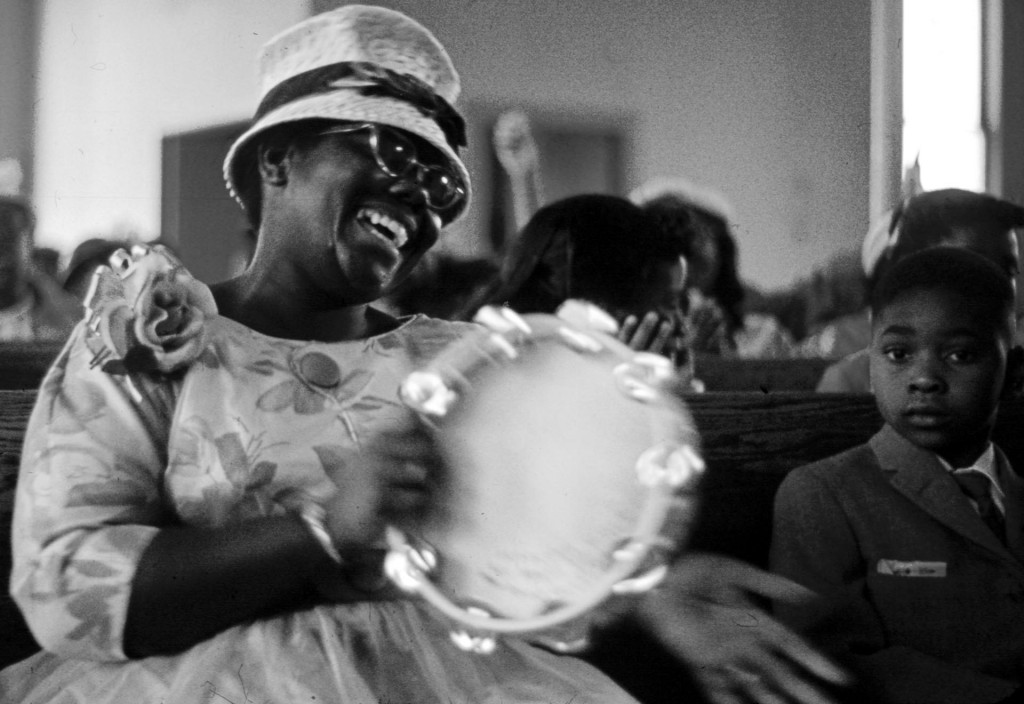Noise matters. Ever tried to have a conversation on a phone with poor reception, snaps, crackles and pops interrupting your ability to hear? It’s a Wednesday and you’re waiting for a friend to arrive. This friend is on a train or a subway or bus. And each time you almost hear there was perhaps an incident. But you are unsure because the noise made itself intensely felt in the conversation, it announced itself as a deformation to smooth conversation. So it is this Wednesday, or that other one – no matter, really – but the noise frustrates. Such frustration is the matter, the material, of conversation. So you end up hearing your phone partner – or perhaps it is you that is saying it – “Can you hear me? Hello! Are you there?”Noise matters. The conversation between friends or lovers or business partners on this or that Wednesday has to be about the noise, about the antagonism in order to have clarity. Noise interrupts flow. So the conversation ends up being about the interruptive. Once clarity gained, once signal clear, “Oh, I didn’t hear you.” “Repeat what you said.” “I was going through a tunnel.” “You were muffled” “I couldn’t hear.” Noise. I have been thinking about noise a lot lately, its texture and weight, its meaning for black performance in churches, on film, across stages. There is noise. Like D’angelo’s “The Line,” in which Dino Palladrino keeps the same bass line throughout the entire song except for moment 4’52” with a noticeable alternation, noise is that which seems most off but can perhaps be the foundation that transforms everything that comes before and after it.
So yes, there is noise in Beyoncé’s latest offering “Formation.” And such noise matters. It is noise that begs our attention. It is a Saturday and someone posted a link to a internet breaking video. There is praise and joy and thinkpieces and laughter. But at my viewing, there is also noise.Look at the brilliant energy Beyoncé caused to erupt since the weekend of February 6, 2016. An energy brilliant and bright that has within it the possibility for transformation. I seriously did not want to write about Beyoncé mostly because I already have. I think the furor and intensity of the responses compel us all to think. And I believe deeply in the pleasure and joy that emanates from her work and that people find within it. As a cisgay black dude, one that misses going to No Parking and Secret and Escuelita in New York now that I’m a Los Angeles resident, I know the transformative power of the beat drop with a Beyoncé song. Don’t let the bass lick of “Deja Vu” slide in the middle of a set, don’t let “drop down low, sweep the floor with it” be rehearsed publicly. Life will be got and that’s all good. So I’m all about joy and pleasure and being happy and free. And the way Black women’s joy and pleasure has been scrutinized and sanitized and made almost impossible – certainly always criticized and problematized and dismissed and discarded – in this writing about “Formation” I want to say up front that I am in favor of pleasure and joy. It is what I write about and research generally.
But joy and pleasure do not emerge ex nihilo, which is why we have to be extremely intentional about what we praise and why. At first I thought it unfair to analyze the video because right wing folks are ridiculous. This engagement is just not that. They dismiss Beyoncé because they are terrible. But because “Formation” aspires toward radicalism, Beyoncé and team invite us to critically engage it. Her continued movements within the currents and flows of the conversation, the necessary and urgent noise making, of black feminisms, womanist thought and the Black Radical Tradition, it seems to me, begs us to engage her on the terrain upon which she stands.
The berets at the super bowl, the faux black panther outfits? The afros and pumped fists? We are called upon by the production of “Formation” itself as something revolutionary and radical, which means it should be held to such a standard. Holding it to such a standard does not presume that any of us stands there, has achieved there, because “there” is not a space to obtain or possess but a movement, a flow – like the gathering of waters – in whose currents we must maneuver. And it seems to me to be the case that the refusal to engage and interrogate the class politics of the video – a class politics that shows up through consumerism, materialism and benevolent capitalism – emerges out of a belief that she can’t handle the conversation, that it is too difficult.I want to talk about and think through the openings created and the delimitations of dancing and singing over consumerist class culture that makes the noise of a desired “Black Bill Gates” and “the best revenge is getting paper” audible. These two statements are seeming aberrations, they are noise that needs cancelation – so far, it seems, unfortunately through refusing to engage it – that we need to feel its vibration in and on and through us. It is a noise that the lyricism of “Formation” couldn’t leave alone, Beyoncé had to get it out. And since it was offered to us, let us consider it.
Let’s take seriously all of our capacities to think…considering the possibilities and limitations of consumerism, materialism and capitalism are not mere academic worries or trifles. The water crisis in Flint, the school crisis in Detroit and Philadelphia and Atlanta, the policing crisis nationwide, the suffering of black, brown, indigenous, poor worldwide, are not disconnected from representation and images. We cannot on the one hand desire to say that the cultural production – always an endeavor, intellectual – is important for thinking with then balk at the occasion for thinking if it entails pushback or disagreement or dissent. That to ask, or to offer really, that perhaps many of us don’t believe in Beyoncé’s intellectual capacity when she herself makes clear that she wants to be taken seriously on the grounds of her aesthetic projects – her dance formations and sartorial choices and lyricism – as practices of the intellect. Can we be joyful about the lyrics that praise Jackson 5 noses, the dual register and play of “baby hair” in its Black English Vernacular force only to dismiss the lyrics that praise unabashed, unfettered capitalist consumption? They exist within the same delimitation, within the same song. We can deal with the complexity, the contradiction. And it seems we have been invited to converse about such complexity and contradiction because the visually stunning images and bass line were offered to us for our engagement.
There is noise. The noise of the desire for a Black Bill Gates, for revenge being best served as getting paper – and paper could be degrees, sure, but also monetary – presents for us a disjoint and disjuncture. The disjoint between image and sound would be cool because black performance is always more than double, is always irreducibly plural. Black performance occurs on multiple registers, is multimodal, arrhythmic, polyrhythmic. Like the young folks say, there’s levels to this shit. But what when rather than an intentional disjoint and disjunction, one desired coherence, one desired consistency? What when one does not imagine that messages about capitalist consumption as a moral good is inconsistent with a message about loving your black flesh, your baby hair and your baby hair?
**
Sometimes I like Paul. You know Paul, the Apostle, the one that told slaves to obey their masters, the Paul that said in his flesh was no good thing. But he said more. I do dig the fact that he did say, “be not conformed to this world but be ye transformed by the renewing of your mind.” And I like that he said that he lived his life in such a way that caused him to write that we should continue to move towards – what I will say here is – justice, equity. He said it was not that as though he had already attained that which he sought but that he would relinquish those things that had hindered him in times past and would continue, and would press toward the mark in the cause of justice. So I like Paul not for what he at all times said. There was noise that inflect how he should be heard, that should compel us to think about his contradictions. Through attention to those contradictions we can know that none of us is exempt and each must be diligent to contend against injustice. I like Paul because in him one really gets a sense that he was trying to figure out how to do justice in his world.
So with the release of “Formation” has been a very intense response from all kinds of people. Twitter was aflutter and Facebook debates have caused rifts between friends and strangers. One thing said about Beyoncé in defense of her is “it’s never enough!” And what is meant by that is some of us want to continually criticize and analyze and scrutinize what she does. But it seems to me to be the case that, yes, for those of us concerned with justice, “it” never is enough. Nor should it be. And I think the perniciousness of the inequity of the economy is discounted when it’s said that “Formation” is just a video, that it is not that deep. Because it is more than a video: it provided jobs to workers in the film and music industries, it is an advertisement for merchandise on her website and for her upcoming tour, it is what colonial states like Israel will use as cultural capital to justify their existence against Palestinian life.
So we do not have the luxury for time off. We have to push each other. Yet as anyone versed in black feminism and womanist thought would know, critique is not neutral and has a context of emergence. So the critique, the pressure and weight to be anti-capitalist, decolonial, anti-imperialist, a prison abolitionist, against privatized education should not befall as the burden of the individual. So insofar as we want to have more than simply a conversation about the political economy but an interrogation of it that is produced through and produces inequity, it is not the burden of the individual.
I work for a university. Universities are currently bastions of neoliberal theory and practice. What I mean is that universities are privatizing education, exploiting local and state resources, are primary exponents of displacement of financially poor communities. Universities currently seem to be more interested in private wealth management and real estate building projects than they are about the work of education, especially teaching and education for the cause of justice, in the cause of alleviating the suffering of people in the world. Lots of universities have senior administration from banking and military industries, folks that have little vested interest in the production of truth and making a more just society. That to say I work within an institutional practice that produces and is produced by racial capitalism, that digs its heels into the privatizing of public resources, an institution that promotes inequity under the guise of multiculturalism and diversity. There is a reason why universities and colleges have pamphlets of smiling young folks of different racial and ethnic backgrounds. Under the guise of diversity and multiculturalism is the fact of the political economy of inequity.
Yet, I must press. My colleagues must press. We all press. We cannot be comfortable. We have to figure out ways to inhabit these spaces while pressing for justice. This is an ethical demand that gurantees discomfort and to be a challenge. And the call to press is not just made to celebrities but to us all. We all share the load. We all have to speak forcefully against capitalism and the way the political economy moralizes against the poor and working class.I wonder who celebrities are to us, why we invest so much time and energy into their worlds. I understand being moved by music, a play, the sound of a sermon, a guitar lick, a drum solo, a textured voice. I understand being moved by the dynamism of a Jordan dunk, the gravity of a Nina Simone arpeggio, the weight and texture of a Kim Burrell riff, the joy and frivolity of a Cam dab, the lightness and sweetness of Whitney’s timbre. But at times we invest something terribly overwrought in these figures which disfigures them – many lament having to be everything for everyone – and disfigures us in kind. Such investment is largely about the ways they come to be powerful, and this within a political economy of inequity. Such investment is largely about what they have attained financially, about their capacity for benevolence because of such acquisition, about gettin’ that paper.
Being a Black Bill Gates, getting paper all, on face value, seem to be ok. But is revenge what we most desire? Is choreographic reversal – wherein the police have their hands up – most desired? That is perhaps true for some of us. But that is not the force of one strain of the Black Radical Tradition. How does one get paper in a fundamentally inequitable economy? And though some argue that one has to attain wealth to speak truthfully, to produce revolution, I fear a misunderstanding of the tradition. Do we wanna rearrange the pieces on the board or blow up the game altogether?
We are all drowning. We need a way out, a way of escape. This isn’t a demand for a politics of purity but for pressing. Pressing each and all of us forces us all to consider how our complicity to the workings of the political economy is demanded of us in order to live. We have to be able to imagine that we can do and live and be otherwise than through the organization of wealth as is the status quo, through the organization of resources through inequity. We cannot let the fact that each of us has our complicity demanded of us be a reason to disengage from the necessity of critical analysis and, hopefully, a lot of imagining and in such imagining, bringing into being otherwise possibilities. We who are abolitionists come from a tradition, a rich and long tradition, wherein liberation was not conferred by Lincoln or others. The enslaved in the United States emancipated themselves through a general strike. We come from that tradition, one that saw the necessity of thinking and living and imagining otherwise.
We are contending against nothing short of empire and its rapacious violence. It is good and right and ethical to ask of Beyoncé to boycott her upcoming performances in Tel Aviv to stand in solidarity with Palestinians who are victim of ongoing violent occupation. It is good and right and ethical to ask Beyoncé to think more about the violence that grounds capitalism, the sorta violence and violation that produces the wealth of a Bill Gates and the violence of benevolent capitalism that is the Gates Foundation. The Gates Foundation is responsible for pouring hundreds of millions of dollars into the privatization of public education, a process that has dispossessed lots of black women teachers, lots of students from neighborhood schools and, yes, lots of black, brown and indigenous people from neighborhoods. It seems our imaginations have become constrained by the political economy, by the current order of things, the contemporary neoliberal organization of knowledge.Think, for example, of schools in Pennsylvania and New Orleans. There have been huge disinvestments in local and state funds for public education, contributing to the crumbling of buildings, the breakup of teacher unions, the lack of capital investment for the futures of black, brown, indigenous, poor educational possibilities. After such disinvestment, the promise of state of the art facilities and teachers that can train students from programs like Teach for America, this after the disinvestment and disenfranchisement. Only after disinvestment is the possibility for profit, which prompts certain organizations to show so-called care and concern. This care and concern obtains only because there is a profit to be made by those that have been marginalized because of the political economy.
And consider the city of Cleveland filing a claim against Tamir Rice’s estate for $500. That is not a lot of money for a city at all. So let me opine: it’s not about the money at all, it’s not about the desire to further humiliate, to further demonstrate power, to further cause the family turmoil. The city could sue for $1 or $10 or $100K and I suspect the reasoning behind it would be the same. Yes, the claim is about the ambulance ride for Tamir. But the state murdered Tamir through an incompetent officer then lied about the event. This lawsuit is legal but is it ethical? The lawsuit is the demonstration of the ways the political economy conspires with the law to produce unethical behavior, to produce violence. So perhaps getting paper, perhaps benevolent capitalism, is not what we need to alleviate suffering. We really need a way out, a way otherwise.
There is no, there cannot ever be, a revolutionary nor radical capitalism. The system of economics is fundamentally exploitive. We have to attend to the alleviation of suffering. It is our task.How to speak to and against these disinvestments that have ruptured the lives of black, brown, indigenous, working class life? How to speak to and against it in the cause of justice? This is demanded of us. That the black political elite have been at the helm of the privatized education movement should not deter us from speaking truthfully. We cannot allow the articulation of our marginalization to allow us to have a neoliberal political horizon, one of profitability and convenience. Is this not what we learn from black feminists pressing against black patriarchy and misogynoir, against those that would marginalize black women from leadership positions and organizing because they are women? Is this not what we learn from black queer folks pressing against the heteronormative impulses that serve as the basis for much rhetoric regarding black community and its disruption of family through racial capital, Middle Passage, enslavement? We learn, in other words, that we who believe in freedom cannot rest because freedom is not a place but a practice, liberation is not something we can possess but only something in which we participate. We can never be satisfied, we can never obtain, we have to keep living and being and striving to do otherwise.
**
It’s ok to have pleasure. And this is not me giving permission because, seriously, I am in no position to give or withhold. And as homie would say, who are me to judge? That is, it is not within my purview nor desire to make a claim on pleasure as a possibility. I write lovingly about my upbringing in the Blackpentecostal church, and this though I know and speak passionately and explicitly against its sexism, homophobia, classism and militarism and desires for empire. In each object is the capacity for multiplicity and sometimes what is in the object is the antidote, the corrective, to the way it can oppress and marginalize.So it appears to me that the desire to policitize “Formation” as a sort of pure performance or as one that can only be analyzed on some of what it gives, does the work of placing the pleasure gained from it in the zone of the political. Pure insofar as class becomes a category that is not under scrutiny nor is it analyzed. This placement into the zone of the political can occur because of the assumption that the political and the pleasurable are distinct categories that only sometimes criss-cross. The will to make Beyoncé malleable through placing her into already predetermined political projects simply instrumentalizes her as an object for our political theorizing, an instrumentalizing that is used in the service – rather than the disruption – of the neoliberal making of herself into a private, consumable product, good and service. And there is also the disappearance made audible through voices with flesh that is never seen. Queer presence is heard but not seen. It is not a disembodied experience but a removal of the flesh, a defleshing. Isn’t the defleshing of queerness on screen similar to a normative longing that produce resistance against, for example, queer folks leading in Black Lives Matter protests? That we should be seen but not heard or heard – that is, showing up – but not seen? It seems to me to be the case that we are afraid of being moved by aesthetics, that we cannot rest with the way she says – dual frequency – “baby hair” – with the color palette, with the dance formations. And it seems we cannot rest there because we think aesthetics lack intellectual content, that aesthetics are not a collective intellectual practice. So we force the pleasure and aesthetics into an already predetermined political project. And because we are radical and enjoy the content then, yes, the content itself must be radical too.
Perhaps it aspires towards such a radicalism, perhaps it moves towards it. And in that, we should celebrate. But there is more required of us all, yes. The reversal isn’t what we desire but a dismantling of the capacity to compel us to raise hands. Because, and this is also key, police are also exploited by the state though producing violence for it. We are all drowning.The people called black demonstrate that blackness is an orientation, a way of life. Black people are insofar as the flesh is performance. This performance is decolonial and abolitionist as its ground of being. Blackness cannot be possessed because it is not, but is the antagonism to, property. And, attendant to this, radical and revolutionary are not identities one can claim. Rather, radical and revolutionary are ways to be in the world, are orientations, are dispossessive in how such ways of life compel us to interrogation and reflection and collective, improvisational organizing. None of us is radical nor revolutionary. Rather, what we do can contribute to or take away from the work of radicalism and revolution. We can put our hands to the plow or take them off. But the work must, will, continue.The work of radicalism and revolution, currents and flows of the work, need us all, we all can and need to participate. These ways of life are not possessive and aren’t property. Rather, people that have come in its name – people in the Black Radical Tradition, for example – enact the tradition rather than identify as the tradition. So, sure, some of us may not get every cue and marker in “Formation” immediately but that just impresses upon us the necessity for community and study as a way to think together. That we do not get the cues does not mean something is not for us, not if those things are made available to us, to the world.
The context of emergence of our practices, given the white supremacist capitalist patriarchal ordering of the world, should force us to be diligent to act against it. That ordering is violent. I always wonder what we would do, say, wear, how we would behave, in absence of that ordering, in absence of that violence. So the celebration of identity, one’s race, ethnicity, gender, religion, of itself isn’t a radical or revolutionary thing. And that’s true even if you are from a historically and contemporarily marginalized group. The question, the challenge, is this: how does this celebration contribute to the work of justice and equity, to the alleviating of suffering?Noise matters. So perhaps we can ask in that ways does “Formation” prompt the imaginations of some to live more deliberately in such a way that does justice against inequity and violence. And we can ask while also experiencing the materiality of the noise, the noise we must engage and through engagement use as a platform for seeking to think and do and be otherwise. Because otherwise is possible. And that’s the beauty of and the dissent about the video: that it opens a space of articulation for imagination and collective thought.















